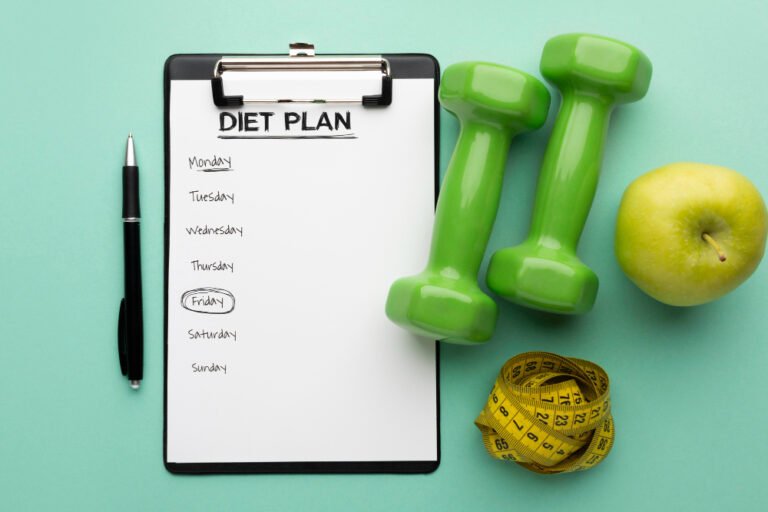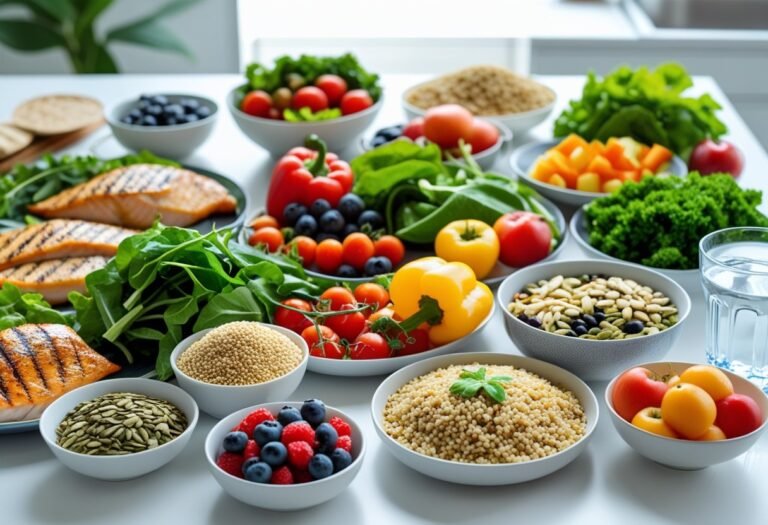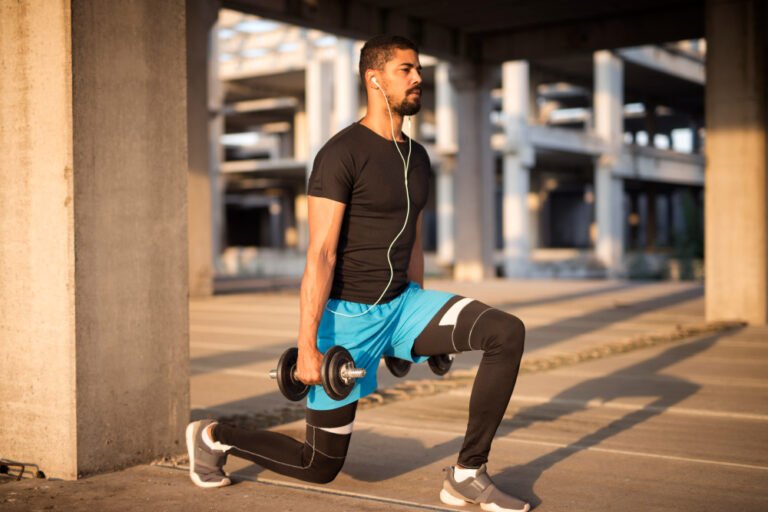Lose Up to 5kg in 7 Days? This Weight Loss Plan Explained
Ever wonder if dropping 5kg in a week is actually possible? With the right approach—balanced meals, portion control, and a boost in hydration—you might be surprised by how much you can accomplish in just seven days.
This weight loss plan is all about creating a calorie deficit and building habits that help you lose weight quickly, but without going overboard.

It’s not about crash diets or some weird juice cleanse. Instead, this method is built on real food, smart timing, and tweaks to your daily routine that just about anyone can try.
Put in some effort and you’ll likely notice your energy climbing—and your confidence, too—after a focused week.
So, what should you eat? How do you keep moving? And how do you stay motivated when cravings hit?
Let’s get into some tips and meal ideas that can actually help you hit that 5kg mark in a week.
What You’ll Learn?
- Weight loss comes down to a calorie deficit, smart meals, and staying hydrated.
- Balanced nutrition and a few lifestyle swaps can speed things up.
- Consistency with food and movement is what helps the results stick.
How Does Rapid Weight Loss Work?
Rapid weight loss happens when you set up the right conditions in your body. Mostly, it’s about burning more calories than you take in, but there’s a bit more to it.
If you manage your calorie intake, metabolism, and nutrition well, things can move pretty fast. But you’ve got to do it safely.
Understanding Calorie Deficit
Here’s the deal: a calorie deficit means you’re burning more than you’re eating. That’s the heart of any weight loss plan.
To lose up to 5kg in a week, you’ll need a pretty big deficit—usually by eating less and moving more.
But don’t go too extreme. If you cut calories too much, your metabolism can slow down, and your body might start hanging onto fat instead of letting it go.
Tracking your food with an app or just reading labels can help. Aim for a deficit that feels challenging but doesn’t leave you wiped out.
Role of Metabolism in Weight Loss
Metabolism is basically how your body turns food into energy. It changes the speed at which you lose weight.
When you eat less, your body sometimes slows down its burn rate to save energy. That can make weight loss stall.
To keep things humming, work in some muscle-building moves—weights or bodyweight stuff. Muscle burns more calories than fat, even when you’re just chilling.
Don’t skip out on water or sleep, either. Both help your metabolism keep up. Crash diets? Those usually backfire.
Balancing Nutrients for Success
Eating less doesn’t mean starving. You need a mix of nutrients to stay healthy while dropping weight.
Go for meals with:
- Protein: Keeps muscles strong and hunger in check.
- Healthy fats: Good for your brain and help you absorb vitamins.
- Complex carbs: Give you steady energy and fiber.
Skip empty calories from sweets and white bread. Real, balanced food keeps your energy up and makes the process way safer.
Think lean meats, veggies, whole grains, and healthy fats like nuts or a splash of olive oil. Simple, right?
The 7-Day Diet Plan to Lose 5kg
This plan mixes protein, fiber, and healthy fats to help you shed pounds but still feel satisfied.
Whole foods, smaller portions, and plenty of water are your friends. More water means better digestion and less “false hunger.”

Day-by-Day Meal Outline
Every day, you’ll eat simple, filling meals with set portions. Breakfast could be whole wheat toast, avocado, and eggs—healthy fats and protein in one go.
Lunch is usually a lean protein, like turkey or tuna on whole grain bread, plus some veggies. Dinner? Grilled chicken, shrimp, or salmon with greens like asparagus or spinach.
Snacks are straightforward—popcorn, almonds, or fruit. The ingredients aren’t fancy, and you don’t need to spend hours cooking.
Honestly, repeating meals and prepping ahead makes the week way easier. No guesswork, just results.
Portion Control and Mindful Eating
Portion sizes matter—a lot. Use measuring cups or a food scale if you’re not sure what a serving looks like.
Stick to 3-4 ounces of protein per meal, or about a cup of cooked grains. Don’t slash your portions overnight. Ease into it so you don’t feel drained.
Eat slowly and check in with your hunger. Try stopping at about 80% full—sounds weird, but it works.
Planning meals and snacks in advance helps you dodge temptation. Out of sight, out of mind, right?
Skip big blobs of butter, cheese, or heavy sauces. Go for lighter dressings and a drizzle of olive oil instead.
Hydration Strategies for Results
Water is huge for weight loss. Shoot for around 8 cups (2 liters) a day, at least.
Start your morning with a glass to get things moving. Drinking water before meals can help you eat less without even trying.
If plain water is boring, toss in some lemon, cucumber, or berries. No sugar needed.
Limit sugary drinks and don’t go wild with coffee or tea add-ins. Hydration also helps keep your energy up when you’re more active.
Want more meal ideas? Check out this 7-day diet plan to lose 5 kg.
What to Eat for Optimal Results
If you’re aiming to lose up to 5kg in a week, what you eat really matters. Go for foods that fill you up and actually give your body some fuel.
Skip stuff that’s just empty calories or causes your blood sugar to spike and crash. Getting the balance right will help you power through the week and keep your weight loss goals on track.
Nutrient-Dense Foods to Focus On
Pick foods loaded with vitamins, minerals, fiber, and protein. Grilled chicken, salmon, shrimp, and turkey are all solid choices for protein.
Vegetables like spinach, broccoli, and asparagus are packed with fiber. They’ll help you feel full for longer.
Complex carbs—think whole grains, oatmeal, sweet potatoes—give you steady energy. They’re way better than white bread or sugary cereal.
Healthy fats from avocados, olive oil, nuts, and seeds are great for satiety and help your body absorb nutrients. Fruits like berries and apples add sweetness and nutrients without a sugar crash.
Foods to Avoid During the Plan
Try to steer clear of processed and packaged foods. Most of them are high in bad fats, sugar, and empty calories.
Junk food, fast food, chips, and sugary baked goods? Not helpful if you’re serious about results.
Sugary drinks like soda and energy drinks add calories but don’t fill you up. They can totally derail your deficit.
Too much salt or fried food can cause bloating and water retention. Stick to fresh or lightly processed foods and your body will thank you.
Structuring Balanced Meals
Each meal should have lean protein, healthy fats, and complex carbs. Try to fill half your plate with veggies or fiber-rich foods.
For example, you might have grilled chicken, roasted sweet potatoes, and steamed broccoli with a drizzle of olive oil. Snacks? Raw almonds or yogurt with berries work well.
Keep an eye on portions—smaller plates can help. That way, you stay in the calorie range you need, but you’re not starving.
If you want a full weekly plan with grocery lists, here’s a helpful 7-day diet plan for weight loss.
Sample Meals and Snack Ideas
Building meals that combine protein, fiber, and healthy fats isn’t as hard as it sounds. Eggs, veggies, and whole grains can go a long way to keep you full and on track.
Snacks should hit the spot and keep hunger at bay without wrecking your progress.

Breakfasts for Weight Loss
Kick off your morning with protein and fiber so you’re not starving by 10am. Try two poached eggs on whole-grain toast with sliced tomato and a bit of olive oil.
Or, go for Greek yogurt with berries and a spoon of almond butter. You get protein, probiotics, and antioxidants in one bowl.
If you’re in the mood for something warm, have oatmeal with chia seeds and a sliced banana. It’s filling, naturally sweet, and gives you a nice energy boost for the day.
Lunch and Dinner Combinations
Pick meals that mix lean protein, veggies, and whole grains. A grilled chicken salad with mixed greens, spinach, cucumber, carrots, and a bit of olive oil dressing is surprisingly filling and doesn’t pile on the calories.
Give a turkey and avocado wrap a try—use a whole wheat tortilla for some extra fiber. Turkey’s got the lean protein covered, and avocado brings those healthy fats that actually help you stay full longer.
For dinner, maybe go with baked salmon and a side of roasted asparagus plus steamed broccoli. Salmon is loaded with protein and omega-3s.
Roasted and steamed veggies add fiber and nutrients, and you don’t have to worry about extra calories sneaking in. Another solid pick is quinoa tossed with grilled chicken and mixed vegetables, drizzled with olive oil.
You get a fiber-rich grain, lean protein, and a bunch of vitamins in one bowl.
Healthy Snacks to Keep You Full
Snacks that blend protein, fiber, and healthy fats really help keep cravings in check. A small handful of raw almonds hits the spot and gives you some good nutrients, too.
Hummus with carrot or celery sticks is crunchy, satisfying, and pretty healthy. Hummus brings protein and fat, while the veggies up your fiber intake.
Air-popped popcorn is a low-calorie, high-fiber snack you can munch on without feeling bad about it. If you want a little sweetness, pair it with an apple or some berries.
A small bowl of low-fat cottage cheese with a few grapes or raspberries is a nice protein boost and adds a touch of sweet to hold you over between meals.
Exercise and Lifestyle for Sustainable Weight Loss
If you want to lose weight in a way that actually sticks, you’ve got to mix the right exercise with solid daily habits. Regular activity burns calories and builds muscle, but honestly, it’s sticking with these habits that makes the difference.

Adding Cardio and Strength Training
Cardio—think brisk walks, cycling, or swimming—gets your heart rate up and burns off calories. Try to get at least 30 minutes in most days.
Strength training matters just as much since it builds muscle. Muscle actually burns more calories than fat, even when you’re just sitting around.
Mix in exercises like weight lifting or bodyweight moves (push-ups, squats—nothing fancy). A combo of cardio and strength training keeps your body strong and helps with fat loss.
Supporting Muscle Mass and Metabolism
Keeping your muscle mass up is huge for metabolism. As you lose weight, you can lose muscle too, which slows things down and makes it easier to pack the pounds back on.
So, make sure you’re eating enough protein and not skipping those strength workouts. Protein helps your muscles recover and grow after exercise.
And honestly, just stay active in general. Walking more, taking the stairs instead of the elevator—it all adds up and helps keep your metabolism humming.
Staying Consistent Beyond the 7 Days
Short-term plans might kick things off, but real results need steady habits. Aim for at least 150 minutes of moderate activity each week—mix cardio and strength however you like.
Find a schedule that fits your life. If you like swimming or biking, do that—it’s way easier to stick with stuff you actually enjoy.
Regular movement, balanced meals, and getting enough sleep all play a role. If you want a detailed day-by-day guide, check out this 7-day weight loss plan.
Frequently Asked Questions
Here’s where you’ll find answers about diet plans, detoxes, dropping weight without exercise, intermittent fasting, veggie options, and what’s actually realistic for long-term results.
